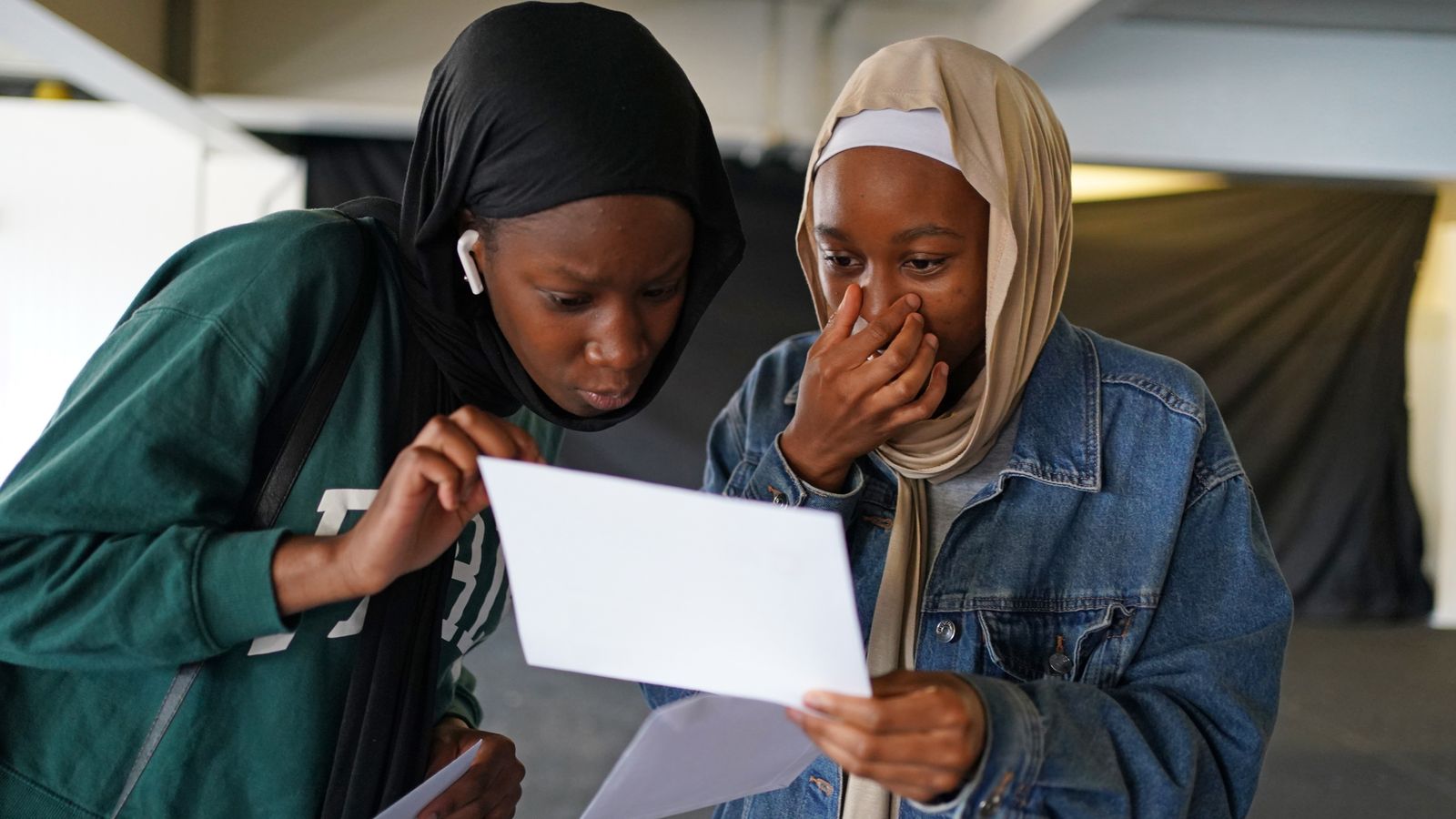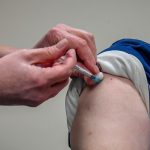GCSE results have hit record highs again this year.
The proportion of UK pupils getting the top grades – that’s a 7 or higher, equivalent to at least an A – is 28.9%, an increase of 2.7% on last year.
The overall pass rate also rose, with over three quarters – 77.1% – of pupils achieving a grade 4 or higher – that’s equal to a C. That’s up 0.8% on 2020.
The gap between boys and girls achieving one of the top three GCSE grades has risen from eight percentage points in 2020 to nine percentage points this year.
After exams were cancelled for the second year in a row due to COVID-19, students were given results by their teachers and assessed only on what they have been taught during the pandemic.
When exams were last held in 2019, only a fifth – 20.8% – achieved at least a 7.
The number of students in England who entered seven or more GCSEs and received a 9 – the highest grade – in all subjects has risen.
Some 3,606 students in England received straight 9s this summer, compared with 2,645 in 2020 and 837 in 2019.
An analysis by Ofqual found that 61.2% of private school entries in England were awarded a grade 7 or above, equivalent to an A or higher.
That’s a 4% increase in absolute terms on last year – 1.3% higher than the rise in state schools.
Some 28.1% of entries at academies achieved at least a grade 7 this year, a 2.2 percentage point increase from last year’s figure of 25.9%.
Teachers in England determined pupils’ A-level and GCSE grades by taking into account their performance in mock exams, coursework and in-class assessments using questions by exam boards.
Exam boards were sent samples of student work and evidence used to determine the grades, as part of quality assurance checks.






















